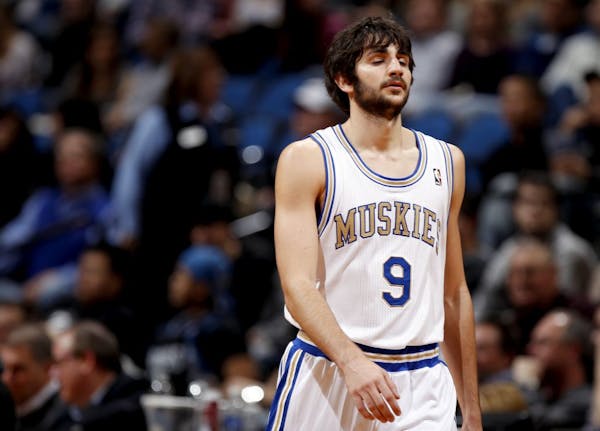Kentucky and Utah were playing for the NCAA men's basketball title in the Alamodome on March 30, 1998. This was Tubby Smith's first season at Kentucky and the culmination of what had been nine years of good work for Rick Majerus at Utah.
The Utes put together a first half of quick-paced efficiency to take a 41-31 lead, then cooled off and Kentucky rallied for a 78-69 victory. It was a night of well-executed basketball that left you wanting more.
Last April, Connecticut and Butler reached the title game in Reliant Stadium in Houston. Butler made 12 of 64 shots from the field for 18.8 percent, forcing UConn to accept a 53-41 victory.
It was a night that left you saying, "I don't know if I want to ever watch another college basketball game."
And, sadly, the UConn-Butler debacle was not an aberration in today's version of big-time college basketball. Last Wednesday, there were two Big Ten games and the four teams averaged 45.3 points.
Back in 1998, watching the Gophers take on a Big Ten opponent on a Saturday afternoon was two hours to be cherished. In 2012, once you decipher when the Big Ten Network has ordered the game to be played, there's a constant urge to shout: "These teams are terrible."
And that's the basketball being played in the Big Ten, which has a comfortable lead in Ratings Percentage Index for all Division I conferences.
What's gone wrong?
The answer is not that standout players are leaving early for the NBA. There is not enough of a trickle-down effect from those players to create what we have now: an endless number of games that are a complete mess.
Majerus is now in his fifth season as the coach at St. Louis University. The Billikens improved to 18-5 this season with a 58-50 home victory over Dayton on Saturday.
I was able to find him by phone earlier Saturday and ask the question: What has happened in the 14 years since your Utes and Tubby's 'Cats put on that classy display of hoops in San Antonio?
"We've taken some good things from the NBA -- shot clock, three-pointer, now the charge-block cup painted on the floor -- but we've also taken things that make it not as pretty of a game," Majerus said.
"It's more a 1-on-1 game, more a pick-and-roll game, and that's the pro influence. There are also very few big men, and we have more of a premium on the three-ball than ever.
"Overall, the three has been good for our game, but that's only when the right guys are taking those shots. You go into any gym now, and watch kids from 7 to 17, and they all gravitate to the three-point line. Even the kids that can't shoot are out there throwing up threes.
"The middle [-range] game is gone. The players we get in college -- it's about the dunk, the three and, more subliminally, about me as an individual. No bad intentions, just kids that want to do it by themselves."
Majerus had Andre Miller as his point guard with Utah's national runner-up. The other prominent point guard in Salt Lake City at the time was John Stockton.
"Stockton and Andre made the pass, they took the open shot, and if they got to the basket, they laid it in," Majerus said. "One factor in the lower scoring we have now is that there are more missed layups than ever. Everyone is trying to style the layup."
How about spacing? The three was supposed to create space, and yet the college court seems increasingly jammed up.
"Offense is spacing; spacing is offense, and yet it seems to be the least-taught thing at every level," Majerus said. "I've been in 150 high school gyms in the past five years and I've heard two coaches talk about spacing -- and one was the guy up there at Hopkins [Ken Novak Jr.]."
So, what's the solution?
"If we could only get the right guys shooting the three and the rest doing what they can do well, that would be a start," Majerus said. "I always remember Don Haskins, the old Bear from UTEP, growling at one of his players after he bricked a long jumper: 'Son, there's a reason they aren't covering you.' "
Patrick Reusse can be heard noon-4 weekdays on 1500-AM. • preusse@startribune.com

Reusse: There's no doubt Finch is the right coach for the Wolves

Reusse: How bad are the White Sox? They made Twins look good.

Reusse's Tortured Columnist Department update: Yes, Vikings won the offseason

Reusse: Wolves need stopper for Booker? NAW, it's not a problem.


